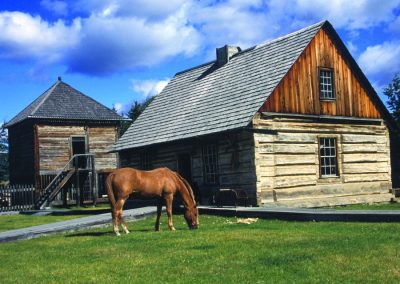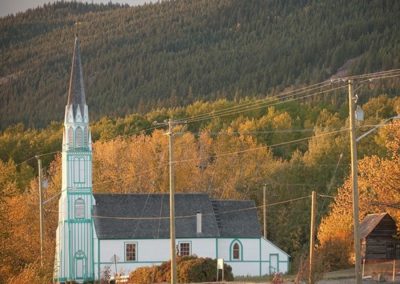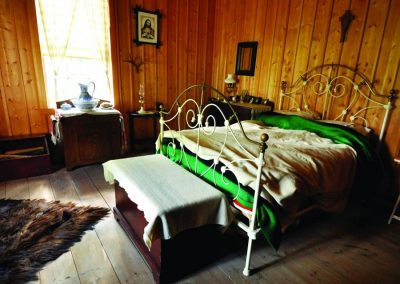Historic Sites
Historic Fort St. James
Information from District of Fort St. James
National Historic Site
Fort St. James National Historic Site is a restored Hudson’s Bay Company post on the southern shores of Stuart Lake. It is commemorated as a centre of trade and commerce in the 19th century fur trade. Originally established by Simon Fraser for the North West Company in 1806, this place displays the largest group of original wooden buildings representing the fur trade in Canada. The story revolves around the relationships and interactions between the fur traders and Native Peoples of the region, namely the Carrier First Nations.
Fort St. James National Historic Site
Ripples of the Past Interpretive Trail
Winding its way through th heart of Fort St. James is a new journey of discovery. Combined with a visit to the historic site, camping fishing, hiking or climbing in the area, this fully accessible self-guided walk is a great day out for visitors of all ages and abilities.
Click on the headings below for more information.
Our Lady of Good Hope Church
Built in 1873, this is one of the oldest Roman Catholic Churches in British Columbia. It is located on Lakeshore Drive overlooking Stuart Lake. Not far beyond the church is the Catholic cemetery where headstones can be seen written in the Carrier syllabics developed by Father Morice.
W34 Junkers Float Plane Replica
A ⅓ scale model of a W34 Junkers plane awaits you in Cottonwood Park. This plane was designed and built in Germany around and after World War I. This type of plane was used by Russ Baker’s company, central BC Airways in the late 1940s. During this time Fort St. James become an important float plane base for the airline, providing service to mining and forestry as well as trapping and hunting interests of the north. These Junkers were used by men such as Russ Baker, Grant McConnachie, Sheldon Luck, Pat Carey, and Merv Hesse, all of whom were instrumental in opening up the north for further development.
First Nations Pictographs
Pictographs (rock paintings) can be seen in twenty-one locations on the north shore of Stuart Lake, between Fort St. James and Pinchi Bay. Accessible only by boat, these Native rock paintings depict animals, fish, birds and symbols showing guardian spirits and images received in dreams. The paint used for drawing was a vegetable based vermilion which weathers quickly; archaeologists believe the paints date back to early in the 19th century.Guides and boat rentals can be arranged.
Grave Site of Chief Kwah
Chief Kwah, also known as the Fur Trade Chief, was one of the most respected and influential leaders of the Carrier first Nation. He was pivotal in the relationship with Simon Fraser and the North West Company. In the summer of 1840, Chief Kwah was laid to rest at the mouth of the Necoslie River.
Please visit the Nak’azdli Band Office prior to visiting this sacred site.
Hudson's Bay Cemetary
The Hudson’s Bay cemetery is the oldest remnant of early fur trading in Fort St James. Not much is known about its history and content, or even when the first person was buried here. However it tells of lives lived here in Fort St. James. The graveyard is located on Stuart Drive behind St. Patrick’s Anglican Church.
Russ Baker Memorial
Aviation history buffs head to the Russ Baker Memorial, which was erected in honor of Frank Russell “Russ” Baker. He was one of the first bush pilots in the Fort St. James area in the 1930’s. After World War II Russ Baker started Central BC Airways for $25, which became Pacific Western Airlines, which later became known as CanadianAirlines International Ltd.
On a secluded bluff with a spectacular view over Stuart Lake, this memorial to the legendary pilot Russ Baker is a great place for a peaceful retreat.
Tom Creek Steam Shovel
The Tom Creek steam shovel has been restored and preserved as a tribute to the pioneer families who contributed to the growth and development of our region during the first half of the 20th century. This Marion steam shovel was brought to the area in the mid-1930’s by Thomas A. Kelley. It traveled under its own steam to Fort St. James, then it was barged to Takla Landing for its final 19 miles to Tom Creek. The shovel was transported to Cottonwood Park in 1994.



